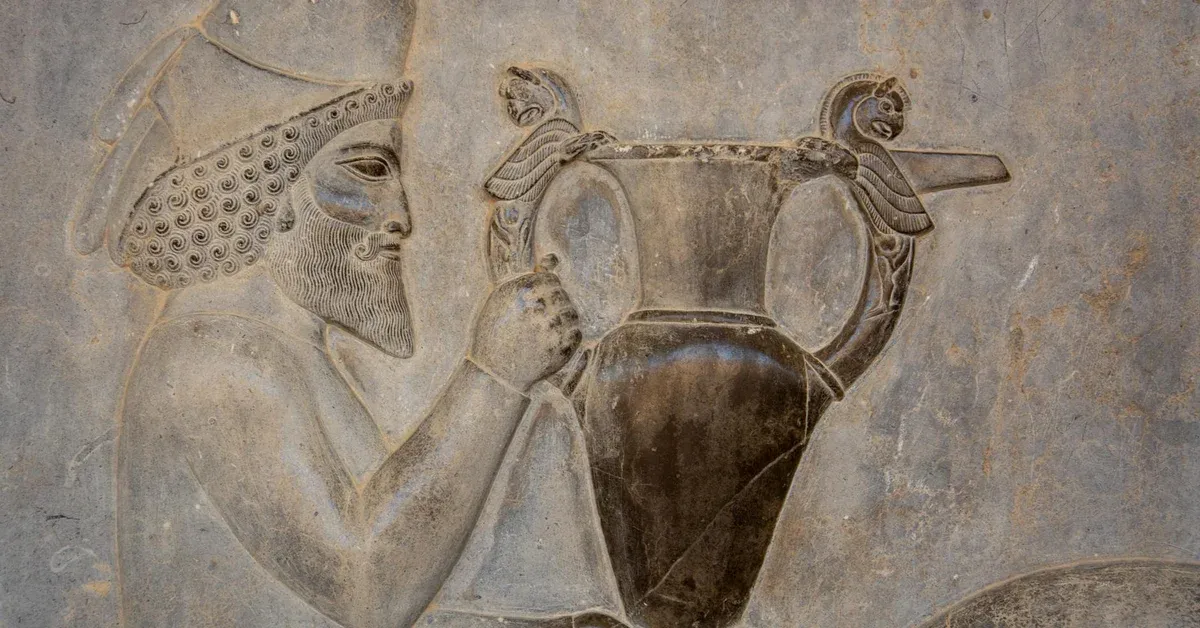
Forget everything you think you know about ancient artifacts. While clay tablets and ziggurats usually grab the spotlight, digging deeper into Mesopotamian culture reveals something much more interesting. We’re talking about ancient Mesopotamia erotic art, where one thing keeps showing up: the beer jug. These vessels aren’t just sitting in the background. They’re front and center in scenes that would make most people today pretty uncomfortable. This weird connection between ancient booze and explicit art gives us a fascinating look into one of civilization’s earliest cultures.
When Beer Was Everything
For ancient Mesopotamians, beer wasn’t just a drink. It was the foundation of society. People used it as payment, food, and for celebrations and religious ceremonies. Archaeological evidence shows beer had serious cultural importance way beyond just getting people drunk.
This love affair with beer reached into spiritual life too. People connected beer with fertility, abundance, and nature’s life-giving powers. They offered beer in religious ceremonies to ensure good harvests and the continuation of life. One historian of the ancient Near East put it this way: “Beer was viewed as a divine gift, capable of transforming both individual experience and communal spirit.” Its constant presence in intimate and sacred contexts suggests it symbolized a powerful, creative force linked to reproduction and vitality.
Reading the Ancient Adult Art
The actual erotic artifacts from Mesopotamia, dug up across modern-day Iraq, are incredibly direct. Made as clay plaques, figurines, and cylinder seals, many show very explicit scenes. What makes them special is how often people in these intimate acts are holding or drinking from beer jugs. In some of the most graphic examples, figures are shown performing oral sex with a straw going straight to a beer vessel. It’s a pretty bold combination.
These aren’t just jokes. Researchers think these images represent complex cultural beliefs. They might show fertility rituals meant to bless the land or people, or reflect aspects of religious prostitution that existed in some ancient practices. The symbolism of beer, mixed with vital fluids and nourishment, would have naturally connected with sexual imagery. An expert in ancient art suggests these artifacts weren’t made primarily for arousal but to communicate deeper cultural stories, often linked to cosmic renewal and divine blessings.
Looking Past Our Modern Shock
When we look at these ancient Mesopotamia erotic art pieces today, we might feel shocked or amused. But we need to understand them in their original context. The openness of these images probably wasn’t scandalous back then. Instead, they reflect a society with a very different, maybe more integrated view of sexuality and the human body. They challenge our often-cleaned-up ideas about history, showing that human sexual expression has always been a complex part of culture and ritual.
These historical erotic artifacts remind us that our understanding of daily life, including very personal aspects, keeps changing with new archaeological discoveries. Such finds constantly push us to rethink the details of early human civilizations, offering insights that regular histories often miss. The basic drives and desires that shape human connection, perhaps like those explored in “The Evolutionary Psychology Behind Sex’s 24-Hour ‘Afterglow’ Effect,” have always existed, showing up in culturally unique ways across thousands of years.
The Legacy of Drinks and Desire
The repeated appearance of beer jugs in Mesopotamian erotic art shows how connected everything was in ancient life. From basic food to deep spiritual practices, from social bonding to explicit sexual expression, beer meant almost everything. It shows how flexible cultural norms around sexuality and public display really are, changing dramatically across different times and places.
What was once a normal visual element, possibly even sacred, in ancient art now becomes a focus for modern academic study and public interest. These aren’t just interesting oddities. They’re valuable cultural documents. They offer a rare, unfiltered look into a vibrant, complex civilization where the lines between everyday life and the sacred, the sensual and the symbolic, were often beautifully and explicitly blurred.